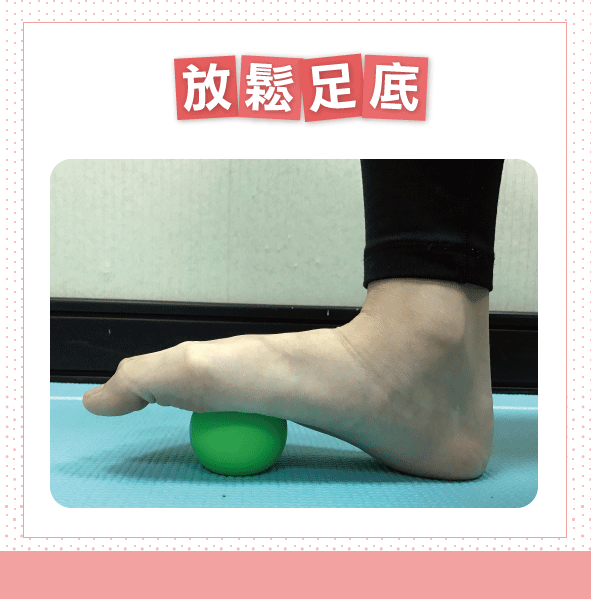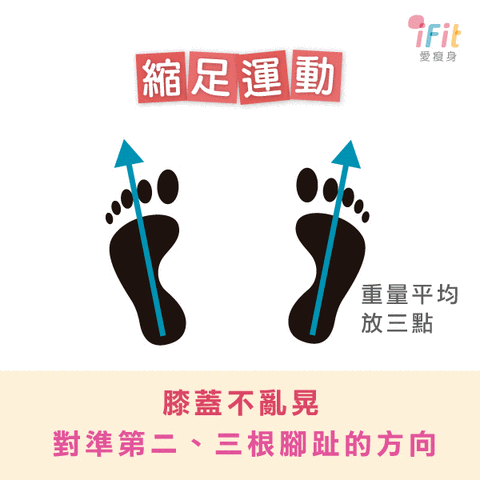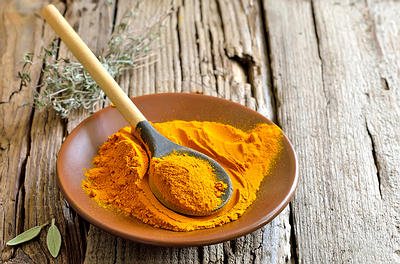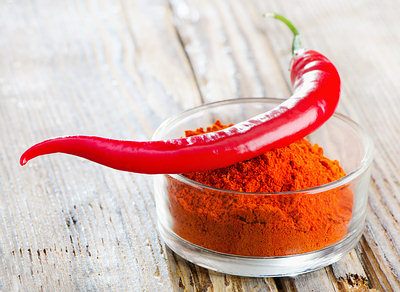拇趾外翻是女生心中的痛,不只外觀不好看,嚴重的還會腳趾交疊,每走一步都會切實地提醒你「它~在~痛」。相信很多人都買過穿戴式的拇趾外翻矯正器或鞋墊,但這些輔助器材都是有穿有保庇,不穿的時候效果難維持,難不成要穿它一輩子嗎?_(┐「﹃゚。)_
莫急莫傷心~先來看看你的拇趾外翻多嚴重,輕微的拇趾外翻有很大的機會可以靠簡單鍛鍊救回來唷!
★ 你的拇趾外翻多嚴重?
.png) 觀察大拇趾下方第一蹠骨與趾骨的連線交角(上圖兩黑線夾角):
觀察大拇趾下方第一蹠骨與趾骨的連線交角(上圖兩黑線夾角):
△ 正常:10~15 度,沒你的事去旁邊玩。
△ 輕度拇趾外翻:20~30 度,很有機會靠運動、徒手治療救回來。
△ 中度拇趾外翻:30~40 度,矯正運動效果不佳,可能要依賴矯正器、鞋墊的幫忙,維持不惡化,或是做徒手治療調整。
△ 重度拇趾外翻:超過 40 度,請醫師評估是否需要開刀。
△ 輕度拇趾外翻:20~30 度,很有機會靠運動、徒手治療救回來。
△ 中度拇趾外翻:30~40 度,矯正運動效果不佳,可能要依賴矯正器、鞋墊的幫忙,維持不惡化,或是做徒手治療調整。
△ 重度拇趾外翻:超過 40 度,請醫師評估是否需要開刀。
★ 為什麼會拇趾外翻?
拇趾外翻可能是天生遺傳、穿著不適合的鞋子、姿勢不良所造成,因此,我們可以從最基礎的兩個方向下手:鞋子、姿勢。
❶ 改變鞋子
鞋子千百種,哪裡可以找到漂亮又好走的鞋呢?與其犧牲自己的腳去配合鞋子,不如選雙好鞋墊幫助你,請看「一雙腳合百樣鞋?搞懂______是關鍵」。
另外,團員常常問「高跟鞋真的不能穿了嗎?」
物理治療師要告訴大家,高跟鞋肯定要少穿,因為它楦頭較小、重心集中到前足,容易使拇趾外翻惡化;如果工作需求一定得穿,建議要買「高跟鞋專用減壓鞋墊」,就能讓壓力分布得較平均,減少對前足的壓迫。
❷ 改變姿勢
你知道站姿不良也會加重拇趾外翻嗎?請閉上眼睛,感受一下站立時重量放在腳內側還是外側呢?如果是在內側(大拇趾這側),就代表重心擺錯位置啦!
當腳習慣了三七步、重心在內側的錯誤站姿,體重壓久了肌肉、韌帶撐不住,腳就會開始變形。因此,最好的方法就是透過「縮足運動」改變姿勢,就能矯正拇趾外翻。
 3 招矯正拇趾外翻
3 招矯正拇趾外翻
❶ 放鬆足底
當拇趾外翻時,腳底的肌群和筋膜為了適應它,都會變得過度緊繃,因此放鬆它們是非常重要的。
將按摩球放在前腳掌下方,用腳往下踩的力量去按壓,可來回搜尋前腳掌附近的位置,一個點按壓 5~10 秒,總按壓時間不超過 3 分鐘。
 ❷ 放鬆小腿外側
❷ 放鬆小腿外側
由於拇趾外翻會讓重心壓在內側,外側肌群就會縮短、緊繃,需要靠按摩來放鬆。
將按摩球放在小腿外側褲子縫線處,距離膝蓋一個手掌寬處(見圖)進行按壓,可順著褲子縫線往下按摩,一個點按壓 5~10 秒,總按壓時間不超過 3 分鐘。
 ❸ 神奇的縮足運動
❸ 神奇的縮足運動
拇趾外翻常伴隨扁平足,當重心壓在大拇趾根部,導致每走一步都壓一下,就會讓大腳趾黏著第二根腳趾。這時只要做「縮足運動」,就能讓腳的姿勢、重心通通回正,鬆開黏 TT 的大拇趾。
縮足運動預備備~開始!
1. 把要矯正的腳當作前腳,跨出弓箭步,前腳腳趾記得朝向正前方。
2. 同時,將重心平均放在「大拇趾根部、小姆趾根部、腳跟」三點,如下圖紅點所示。
3. 膝蓋要對準第二、三根腳趾中線,如下圖藍色箭頭的方向。
4. 身體要維持挺直、骨盆保持中正,做深呼吸,誘發足底的深前線(註一)來幫忙出力。
1. 把要矯正的腳當作前腳,跨出弓箭步,前腳腳趾記得朝向正前方。
2. 同時,將重心平均放在「大拇趾根部、小姆趾根部、腳跟」三點,如下圖紅點所示。
3. 膝蓋要對準第二、三根腳趾中線,如下圖藍色箭頭的方向。
4. 身體要維持挺直、骨盆保持中正,做深呼吸,誘發足底的深前線(註一)來幫忙出力。
 做縮足時,會發現腳的重心調整後,足底會自然地輕輕出力,拉起內側的足弓,讓大拇趾與第二腳趾分開。抓到感覺後,請做 10 下弓箭步蹲,過程中維持縮足的動作,不能被「打回原形」唷!
做縮足時,會發現腳的重心調整後,足底會自然地輕輕出力,拉起內側的足弓,讓大拇趾與第二腳趾分開。抓到感覺後,請做 10 下弓箭步蹲,過程中維持縮足的動作,不能被「打回原形」唷!
最後來個成果驗收,雙腳與肩同寬站立,兩隻腳同時做縮足的動作,鏘鏘鏘~鏘,大拇趾竟然分開囉!
.gif) 縮足就跟平時需要維持的正確姿勢一樣,只要養成習慣,應用到走路、站立等日常生活中,拇趾外翻就能有效地被控制。是不是很神奇呢?快來試試上頭三招放鬆術吧!
縮足就跟平時需要維持的正確姿勢一樣,只要養成習慣,應用到走路、站立等日常生活中,拇趾外翻就能有效地被控制。是不是很神奇呢?快來試試上頭三招放鬆術吧!
註一:深前線是身體筋膜中的一條筋膜鏈,貫穿全身,間接連結到核心,正確地做出縮足,其實可以誘發核心收縮唷!(哇嗚~這麼厲害!)
https://www.i-fit.com.tw/context/1748.html

How to Treat Bunions without Surgery
Foot issues like bunions can have a drastic impact on your pace and ultimately on your daily schedule.
A bunion is defined as a bony bump that develops on the joint at the base of your big toe. This type of foot deformity consists of both bone and soft tissue.
It occurs when the big toe pushes against the toe next to it, forcing misalignment of the joint.
While bunions are common on the joints of big toes, smaller ones can develop on your little toes.
In addition to the bump, other symptoms of a bunion include inflamed skin on the side of your big toe, thick skin on the underside of your big toe, calluses on your second toe, persistent foot pain and difficulty moving your big toe.
Wearing poorly fitting shoes is the most common cause of bunions. They can also be caused due to genetics, where a faulty foot structure is inherited. Some medical conditions that can contribute to this kind of foot deformity are flat feet, excessively flexible ligaments and an abnormal bone structure.
There are several treatment options available for bunions, including surgery. The goal of surgery is to relieve pain and improve functioning. But it is important to know that after surgery, you may have to temporarily wear a surgical shoe or a cast as well as keep all weight off the foot for sometime.
Surgery is an expensive procedure. Hence, it may be wise to seek a second opinion before making a final decision.
If your problem is not too severe and you are looking for less invasive and natural treatment options then you can try some easy-to-follow remedies that help reduce the symptoms as well as improve the condition of your foot and slow a bunion’s progression.
Here are the top 10 ways to treat bunions without surgery.
1. Cold Compresses
After you’ve been on your feet too long, chances are high that a bunion will become inflamed or painful.
To reduce pain and swelling, cold compresses are the best treatment. The cold temperature provides relief by lending a numbing effect on the nerve endings.
- Put several ice cubes in a thin washcloth and wrap it properly.
- Apply the ice pack on your foot for about 10 minutes.
- Remove the ice pack for 5 minutes.
- Repeat the process 2 or 3 times until you feel relief.
- Use this simple remedy a few times a day.
Note: Do not use ice directly on the skin to avoid ice burns.
2. Toe-Stretching Exercises
Any exercise that helps strengthen the abductor hallucis, a muscle in your foot responsible for the flexibility of your big toe, is effective at reducing the discomforts of bunions.
Stretching exercises for toes will help keep them flexible and mobile. They will also improve circulation, red blood cell activity and bone realignment. However, exercise will not correct the position of a deformed toe.
- Place an elastic band around the big toes on each foot.
- Slowly turn your feet outward until you feel the stretch on the big toes.
- Hold this position for 1 minute.
- Relax for 1 minute, and repeat again.
- Do this exercise for 15 minutes, 2 or 3 times daily.
[youtube:https://www.youtube.com/watch?v=GncdLDamLMI]
3. Warm Oil Massage
Massaging the affected area with some warm oil is another effective way to treat the discomforts of bunions. Massage improves blood circulation, which helps reduce the severe pain as well as inflammation.
It also reduces the pressure between the toes and the risk of developing corns and calluses.
It also reduces the pressure between the toes and the risk of developing corns and calluses.
- Warm some castor, olive or coconut oil in the microwave.
- Dab the warm oil on the affected area.
- Using your fingers, do deep-friction massage for 10 minutes.
- Repeat 2 or 3 times daily.
4. Epsom Salt Soak
An Epsom salt soak is another effective way to soothe sore, irritated feet due to bunions.
The high amount of magnesium sulfate in Epsom salt can help get rid of the inflammation and pain brought about by the bunion.
- Pour a few tablespoons of Epsom salt in a foot tub that is big enough to cover your foot up to your ankle.
- Fill the tub with lukewarm water.
- Soak your tired feet in it for 15 to 20 minutes.
- Use this remedy 2 or 3 times a week.
If you do not have Epsom salt, even a warm water soak will help.
5. Chamomile
Chamomile is one of the best herbal remedies that provide relief from bunion issues. Its anti-inflammatory nature helps reduce the swelling and inflammation as well as reduce the pain.
- Brew a cup of chamomile tea and drink it 2 or 3 times a day.
- Also, apply the used, warm chamomile teabags directly on your bunions for 10 minutes, 2 or 3 times daily.
- Alternatively, mix 1 tablespoon of dried chamomile with enough water to form a paste. Apply this paste on your bunions. Leave it on for 15 minutes, then rinse it off with water. Follow this remedy twice a day.
6. Calendula
Like chamomile, calendula is another herb rich in anti-inflammatory properties that can help reduce the discomforts caused by bunions, such as pain and swelling. Plus, it can reduce the risk of developing corns and calluses on the affected area.
- Apply over-the-counter calendula ointment on your bunions 2 or 3 times daily.
- Alternatively, crush some fresh calendula leaves to extract the juice. Apply the juice on the affected area and allow it to dry on its own. Repeat 2 or 3 times daily.
7. Turmeric
Turmeric is also effective for treating bunions. The compound curcumin in turmeric is rich in anti-inflammatory properties that help reduce inflammation and pain.
- Dissolve 1 teaspoon of turmeric in a glass of lukewarm water. Drink it twice daily to ease inflammation.
- Also, mix a little olive oil and ½ teaspoon of turmeric powder to form a paste. Apply it directly on your bunion 2 or 3 times daily for several days.
- Alternatively, you can take curcumin capsules, after consulting your doctor for proper dosage.
8. Cayenne Pepper
Cayenne pepper is effective in relieving the pain caused by bunions. It contains the compound capsaicin that has anti-inflammatory properties that help get rid of the pain and discomfort of bunions.
- Apply a thin layer of petroleum jelly on the affected area and put cayenne pepper powder over it. Leave it on for a few minutes, then gently press on the area with a piece of cloth.
- Alternatively, buy an ointment containing capsaicin and apply it directly on your bunion 2 or 3 times a day.
9. Acupuncture

While acupuncture isn’t a way to get rid of bunions forever, it can ease the pain on the side of your foot.
In acupuncture, thin needles are used locally on and around the bunion, along with points that can address a weak spleen, an underlying cause of bunions.
It is best to have acupuncture done by an expert who specializes in it. It may take few sessions of acupuncture to reduce the pain and improve the mobility of your foot.
10. Wear the Right Shoes
When suffering from a bunion, check your footwear. Improper footwear not only puts you at a higher risk of foot problems, it can even aggravate the symptoms and delay the healing process.
- Look for shoes that have a wide, deep area for toes to avoid rubbing and putting pressure on the bunion.
- Any pair of shoes that you wear even for a few hours should have plenty of room around your toes and should conform to the shape of your foot.
- You can use padded shoe inserts to distribute pressure evenly when you move your feet.
- Avoid wearing high-heeled shoes with narrow, pointed toes as they can cause friction and abnormal movement of the toe joints.
- Do not wear tight-fitting socks or stockings.
Additional Tips
- Try using shoe inserts to avoid abnormal foot motion. Arch supports or orthotics prescribed by a physician are also very helpful.
- Using pads or cushions may help reduce the discomforts. However, avoid over-padding as it may increase pressure, leading to more pain.
- For mild to moderate bunions, walking barefoot can help a lot.
- Wear padded socks when you’re walking around the house.
- Avoid ballet dancing and other activities that require constrictive shoes.
- To curb pain and inflammation, include anti-inflammatory foods in your diet. Also, include protein as well as foods rich in vitamins A, B complex, C and E in your diet.
https://www.top10homeremedies.com/how-to/treat-bunions-without-surgery.html






沒有留言:
張貼留言